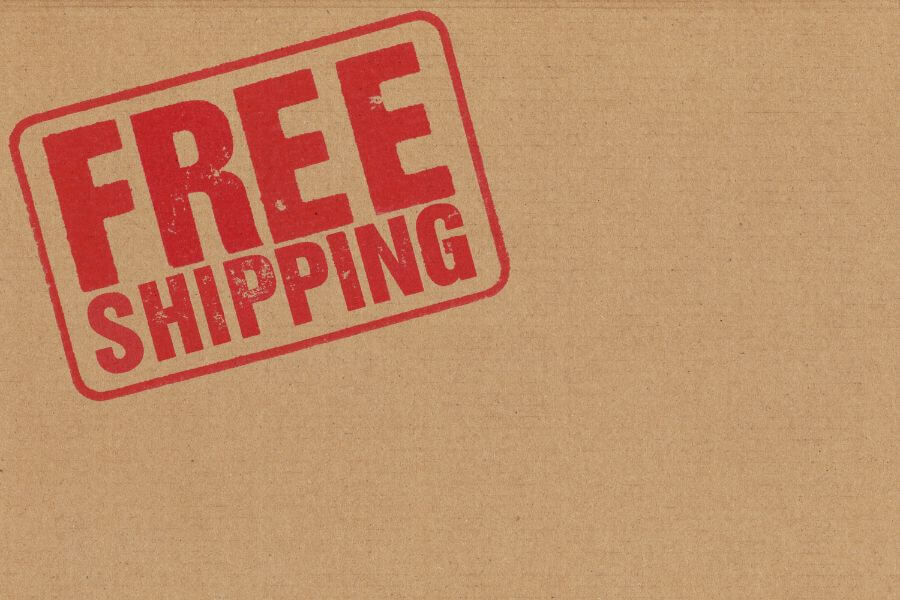Entrepreneurs know that getting a new ecommerce brand off the ground is hard work. If you’re part of that exclusive group, you’ve committed the time, resources, and effort necessary to make your vision a reality. You’ve taken all the necessary steps: designing, manufacturing, setting up a website and social media, marketing and reaching out to potential customers. Your preparation, combined with a great product and a little bit of luck, will start generating orders. And when that happens, those orders need to be fulfilled.
Fulfillment is a critical part of any e-commerce venture, but it’s often the last thing to be considered. While a company just starting out can rely on a small staff shipping out of the CEO’s garage, it won’t be long until a successful startup has more orders than it can handle. When the orders start to pile up and become unmanageable, it’s past time to start thinking about a fulfillment strategy.
What is a Fulfillment Strategy, Anyway?
Fulfillment is nothing more than the process of filling orders: picking the product from inventory, packing it, and shipping it to the buyer. Sounds pretty simple, right? Well, not necessarily.
Once you have more than a handful of SKUs and you’re shipping hundreds of orders a day, you have to think about logistics—put simply, how to manage your inventory in motion and at rest. You’ll want a modern order management system to organize and monitor your incoming orders. You’ll need to consider what carriers to use for standard and express shipments, and if you’re shipping internationally, you’ll have to deal with customs as well. If you decide to keep fulfillment in-house you’ll probably need to lease warehouse space, so you’ll need warehouse management software and scanners.
If it sounds like a lot to think about, it is. And that’s just the tip of the iceberg. Putting all these moving parts together and making them fit is what fulfillment strategy is all about. For some emerging (and established) brands, it might make perfect sense to keep fulfillment in-house. For others, drop-shipping or outsourcing to a fulfillment provider could be better options. Choosing one of these methods is the first step in developing a solid strategy. Let’s take a look at the various options and what you need for each in order to optimize your fulfillment process.
Self-Service Fulfillment
Before you decide to go it on your own, consider the trajectory of your business and whether you’ll be able to allot the necessary resources to the fulfillment process. Is your business growing quickly? If so, will you be able to scale your fulfillment operation to keep up with increasing orders? As you grow, fulfilling orders can take up most of your day, especially during peak periods. You might decide that investing in marketing and research is a better use of your resources.
After careful consideration, if it makes good business sense for you to handle your own fulfillment, you can start putting together a plan. Here are some of the things you’ll need when getting started:
An Organized Warehouse: Whether you’re still filling orders out of your garage or basement, or you have a larger warehouse space, it’s time to get organized. Arrange your SKUs in a logical manner, with the most commonly ordered products in the most accessible space. Put them within easy reach so the picker doesn’t have to reach or bend. Less commonly ordered items can be stowed in more out-of-the-way areas, or on higher or lower shelves. Once you’ve decided on the best location for each product, barcode your SKUs and locations for use with WMS scanners.
Order Management Software: As order volume increases, you will need a way to keep the orders organized and easy to process. A good order management software solution is critical, as it allows you to see all your incoming orders in one place, monitor their progress, and see when they’ve been picked, packed, and shipped. This is especially important if you’re selling through multiple channels since filling orders through those channels separately could become a logistical nightmare. Your order management system should be easy to integrate with online shopping carts such as Shopify and Magento and any other software you use in the fulfillment process.
Warehouse Management System (WMS): Once your warehouse is organized, you need a system to keep it that way. A WMS consists of software and hardware that allows you to scan your various products (SKUs) into locations within your warehouse and keep track of them as they move through the fulfillment process. Warehouse employees scan barcodes on products and locations to record when an item has been picked, when it’s been packed, and when it’s been shipped. Your WMS is a critical logistics tool that helps you keep track of inventory amount and location, as well as tracking a particular item through the fulfillment process. It allows you to manage your inventory levels and get orders out the door.
Returns Management: At some point, you’ll be dealing with returns. Whether the customer received a defective item, you sent the wrong product, or the buyer simply decided they didn’t want their purchase after all returns will happen. You’ll want to develop a policy for returns that is both fair and makes business sense. Surveys show that easy returns are important to 85% of consumers, and most of them expect free return shipping. A customer-friendly returns policy is critical to customer experience, but returns can be difficult to manage logistically. Fortunately, modern technology can make the process easier. A good logistics platform should include a returns management component, so you can track and respond to return requests from customers, create (or allow them to create) shipping labels, track returns as they are shipped back to you, and process them when they return to your facility.
The sooner you get serious about developing your fulfillment process, the better. Simple Global offers a cloud-based logistics platform that can give you all the necessary components you need to manage e-commerce fulfillment. To find out how we can help, sign up and explore our sandbox mode, or contact us.
Next, let’s take a look at another popular method of fulfillment: Dropshipping.
Dropshipping
In dropshipping, the seller does not maintain a warehouse or keep any inventory on hand at all. When orders come in, the seller purchases the items ordered from a wholesaler (or manufacturer), who ships it directly to the buyer. You’re more likely to use dropshipping if you are a retailer selling a wide range of products from numerous brands. However, If you’ve started your own brand and your manufacturer has fulfillment capabilities, it might be possible to set up a dropshipping arrangement. There are plenty of advantages to this fulfillment method, but there are significant disadvantages as well. If you’re thinking about choosing this strategy, you will have to consider both.
Among the advantages of dropshipping are:
- You don’t need to spend a lot of money on inventory to get started. You’ll purchase products as the orders come in.
- You won’t have to maintain an actual warehouse, so your overhead will be significantly lower.
- You’ll be able to scale more easily, since another party will be handling your orders.
Some disadvantages include:
- For retailers, your profit margins will likely be low. You will be completing with other dropshippers selling similar products, all trying to entice customers with the lowest possible prices.
- Because you never see or handle the product, you’ll have less control over packaging and branding.
- Fulfilment errors will be out of your control, but you’ll still have to take the heat for them. The buck stops with you.
Dropshipping can be strategically employed to reduce the stress and expense of scaling your business. If your startup or small business is growing, you might not be able to keep up with increasing demand for your products. Hiring new fulfillment staff might not be financially feasible until your revenue grows. Still, you need to get the products to the customers in a timely fashion, or you risk a poor customer experience. Dropshipping lets you scale without increasing your workforce. Once revenue starts building from increased sales, you can decide if you want to continue dropshipping or start fulfilling those orders yourself.
You might also add dropshipping to your current fulfillment strategy to increase your capacity during peak seasons. It’s an alternative to hiring seasonal staff and could be more cost-effective.
If you’re thinking of adding dropshipping to your fulfillment strategy, we can help. Simple Global’s ONE software supports dropshipping interfaces, so you can combine the advantages of dropshipping with the benefits of full-service or self-service fulfillment.
Outsourced Fulfillment
The third option to look at when developing your fulfillment strategy is outsourcing. Letting a 3PL (Third Party Logistics Provider) handle your fulfillment might be the best option if you are looking to expand into new markets, scale your operations globally, or want to focus your attention on other aspects of your business such as product development or marketing. Here are some questions to consider:
Is fulfilling orders taking up most of your day?
As important as fulfillment is, packing and shipping orders are probably not the best use of your time. You and your staff need to keep the business running, which means focusing on product innovation, marketing campaigns, and customer service. While you could hire additional employees and rent warehouse space, it’s often more cost-effective to leave fulfillment to logistics experts. You’ll be able to redirect your resources toward growing your business.
Is your business growing? Are you trying to scale globally?
If your orders are increasing, or you are attempting to reach global markets, you need an infrastructure that can handle the increased activity. Acquiring additional warehouse space, hiring warehouse staff, and setting up a warehouse management system is a big investment in time and money—neither of which is in great supply for a small but growing company. Established fulfillment providers already have the infrastructure you need, and they’ve got experience using it to process and ship orders efficiently.
Do you have the expertise to ship internationally?
When shipping internationally, packages have to be properly declared for customs clearance. Sometimes this can get a little complicated, and if the documents aren’t properly prepared, it can cause problems when the package arrives at customs in the destination country. The package might be delayed, or in some cases not delivered at all. Fulfillment providers deal with international shipments all the time and understand what various countries require for customs clearance. In addition, they can often provide you with discounted shipping rates since they ship in bulk and can negotiate lower rates with carriers.
Finding the Right Fulfillment Provider
If you’ve asked yourself these questions and decided to outsource fulfillment, it’s time to start looking for a provider. But how do you go about selecting the right one?
As an e-commerce brand, you need to choose a company that is modern, agile, and technology-oriented. They need to have the ability to scale with you so that as you grow they have the capacity to continue shipping your orders on time. They need to be able to adjust on the fly as demand fluctuates between slower periods and peak seasons. And they need a logistics platform that covers all the basics: Store and Order Management, Inventory Management, ASNs (Advance Shipping Notifications), Shipping, and Returns. They must provide transparency into the whole process and visibility of your inventory so that you know what’s happening with your stock and orders at all times. Their software should be able to keep track of orders across multiple channels and warehouses.
At Simple Global, our Full-Service Fulfillment solution is vertically integrated, meaning our network of warehouses, fulfillment and support services, and cloud-based ONE platform combine to handle all elements of the post-purchase experience. Vertical integration allows us to help your company scale globally while making sure your customers get their orders filled correctly and on time.
If you’re ready to scale globally or need further help developing your fulfillment strategy, contact us today. One of our logistics experts will be glad to assist you.





